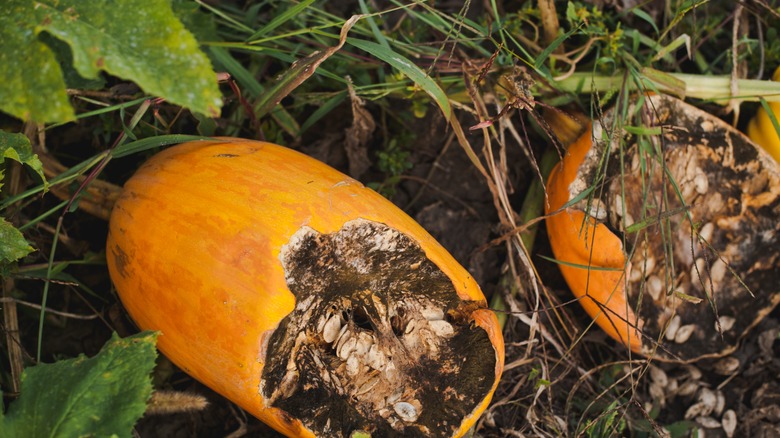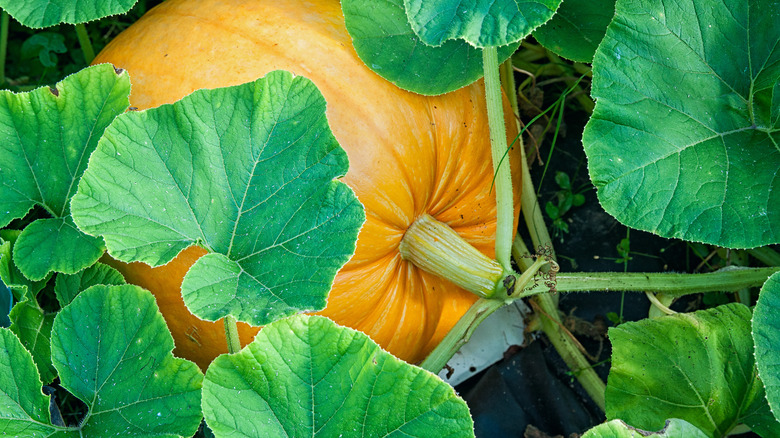Prevent Your Pumpkin Plants From Rotting With This Easy Tile Hack
We may receive a commission on purchases made from links.
You can expect to start harvesting pumpkins 90 to 120 days after planting the vine. That's a long time to wait, only to find the plump vegetables have rotted where they sit. And, it's not ideal if we are relying on them for the Thanksgiving dinner table or to try out those genius pumpkin carving hacks you saw on TikTok. Rot happens when pumpkins grow directly on the soil of your garden bed. They're continually exposed to dampness and insects that penetrate the tough skin as it develops. Protect your pumpkins by placing an old ceramic floor or roof tile under each pumpkin as it grows. This creates a barrier between the fruit and these environmental hazards.
It doesn't even have to be a tile; anything solid, flat, and waterproof will do. Look around your house, garden, or neighborhood for large, level rocks (big, smooth river stones work well), ceramic dinner plates turned upside down, or a few old bricks. Choose an item that the water —from rain, irrigation, or your garden hose — will run off rather than pool on, or you'll still have a rot issue. If you have some money in your gardening budget, you can buy ready-made melon cradles. Plastic cradles are the cheapest option, like this basic 50-piece set of 20-pound supports for just under $10 on Amazon. Alternatively, Park Seed has a set of five durable galvanized steel cradles for $21.95 — these will last many seasons.
The how-to
Some garden experts suggest sand under pumpkins as a protective layer, while others say to use cardboard, or a folded newspaper, straw, or plywood instead of a tile. However, these are still organic materials that are also prone to rot and must be replaced often if growing big, healthy pumpkins rather than slimy, ill-looking fruit is your goal.
Whatever implement you choose to use, the how is always the same. Gently lift your pumpkin from below using one hand, careful not to break the stem at the top of the fruit. With your other hand, slide the cradle — be it a tile, rock, or plate — underneath the pumpkin. Lower the fruit down onto the cradle again, being as gentle as possible so you don't scratch the skin of the pumpkin. Any damage to either the stem or skin can introduce disease. Check the pumpkin's base often to ensure it's not damp and water isn't pooling in the cradle — a surefire recipe for rot.

